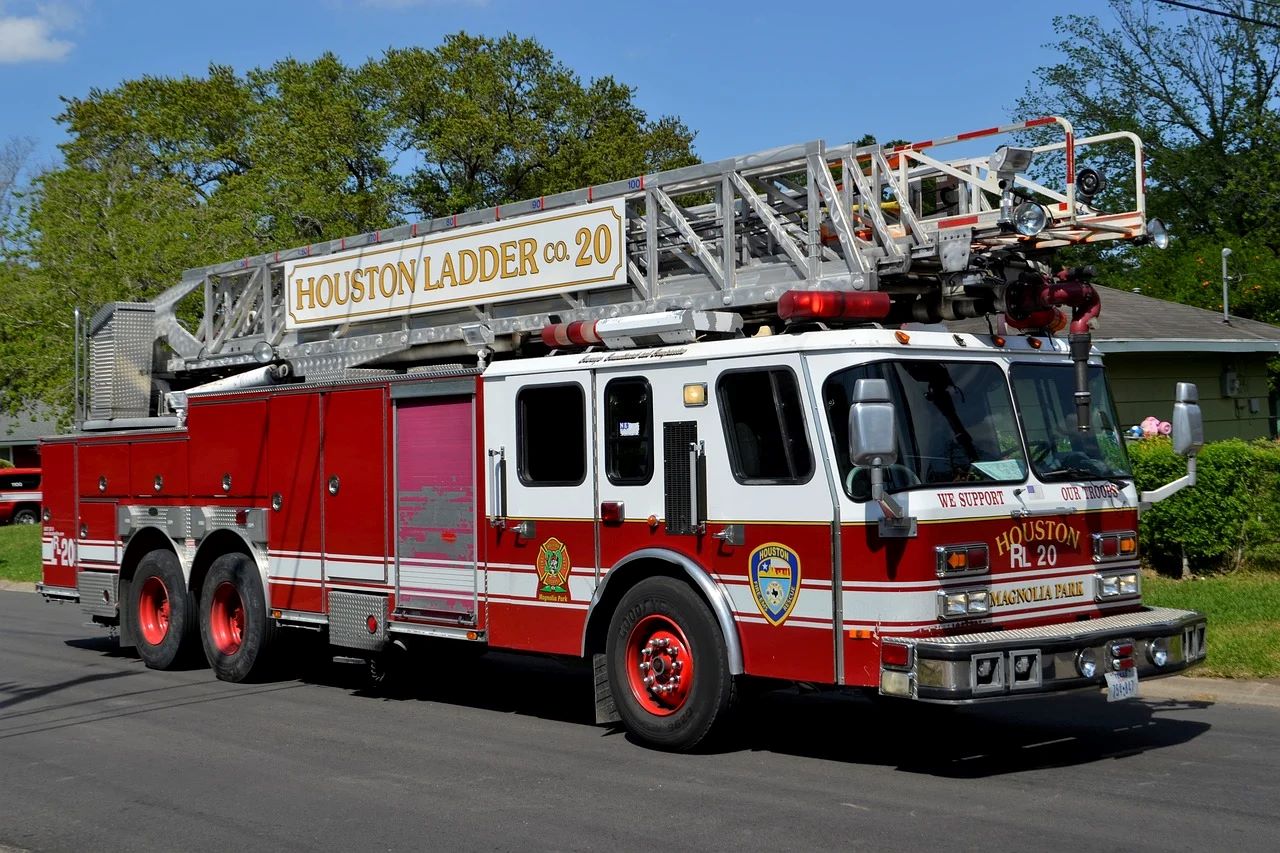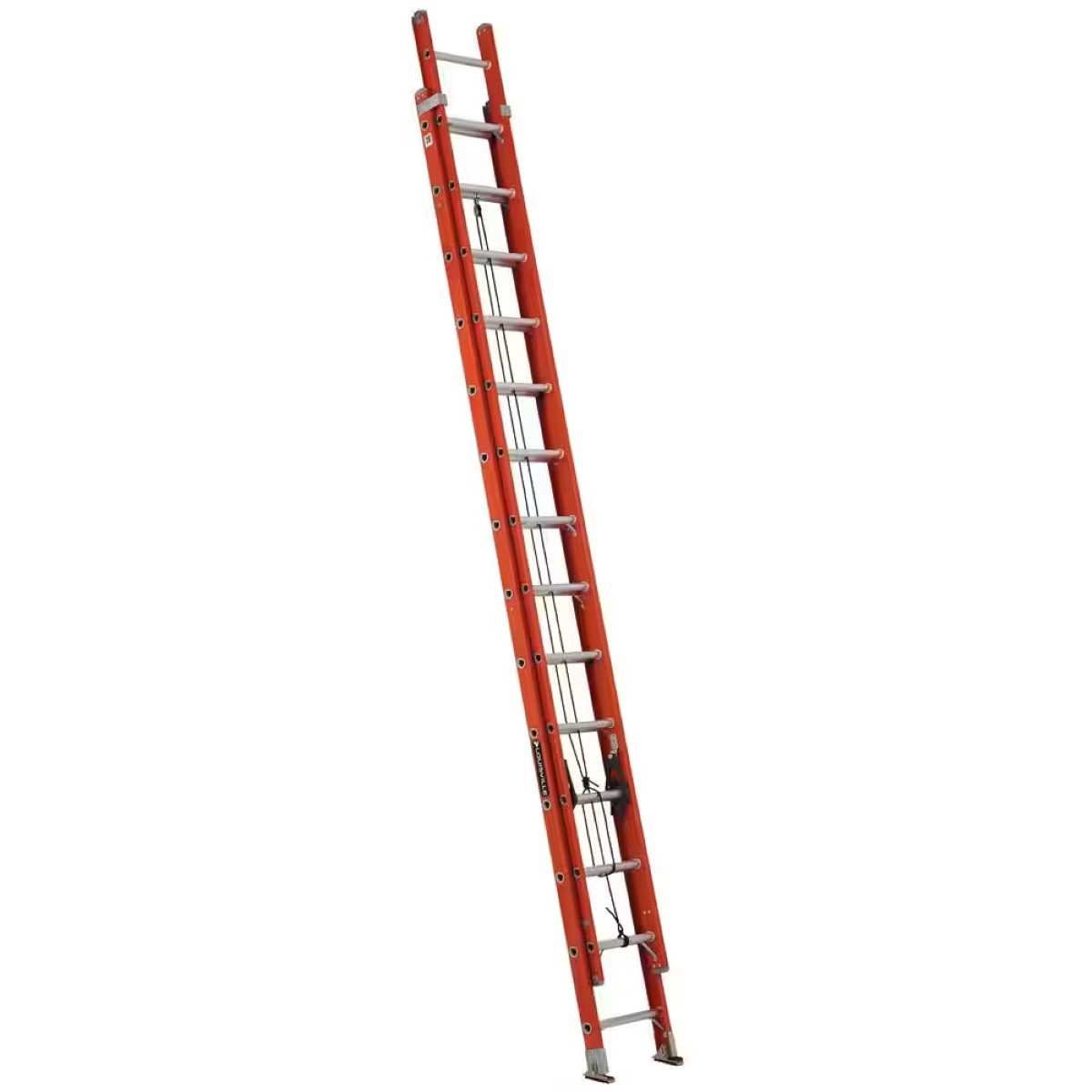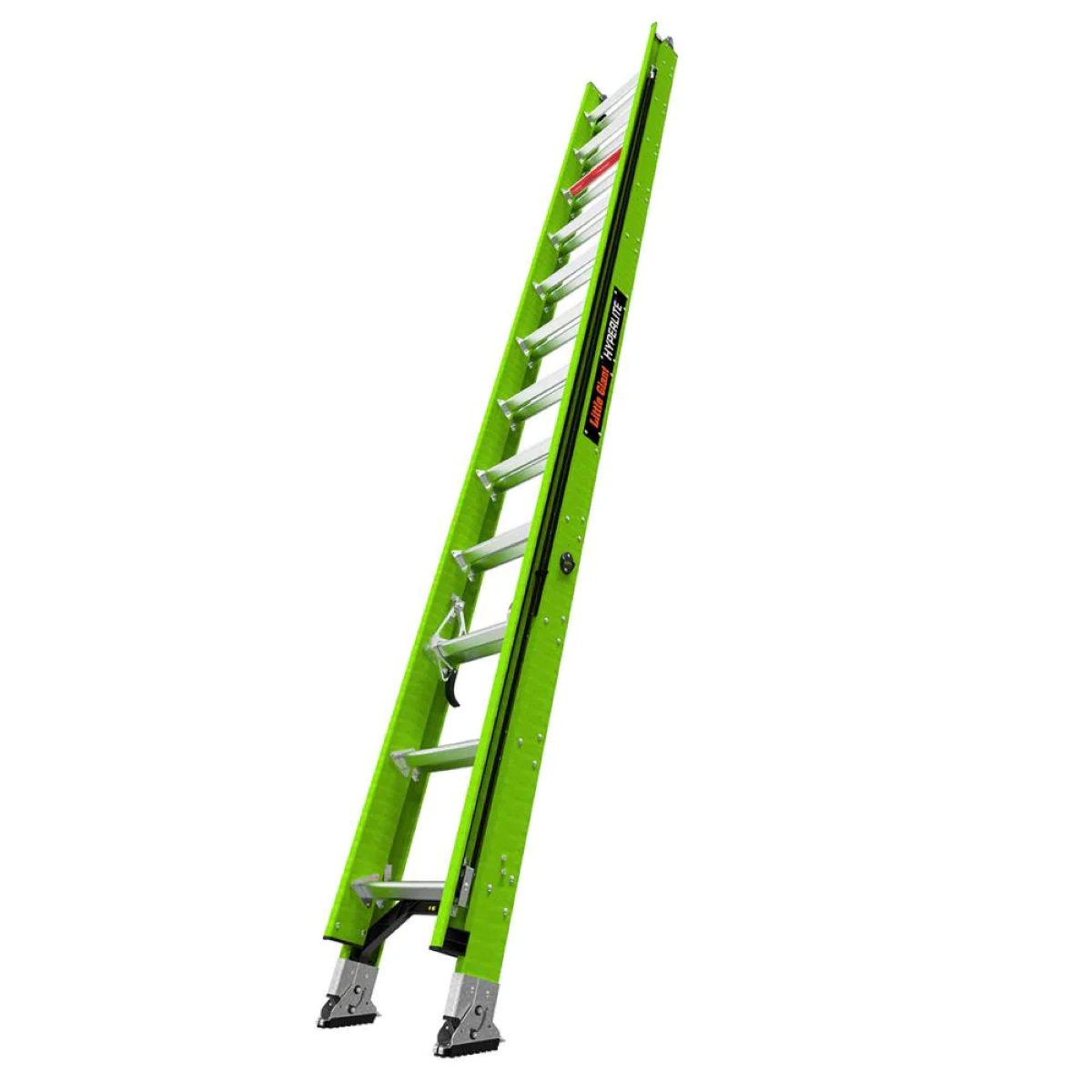

Articles
How Much Does A Ladder Fire Truck Weigh
Modified: January 5, 2024
Looking for articles on the weight of ladder fire trucks? Find out how much these essential emergency vehicles typically weigh in our informative article.
(Many of the links in this article redirect to a specific reviewed product. Your purchase of these products through affiliate links helps to generate commission for Storables.com, at no extra cost. Learn more)
Introduction
Welcome to our article all about the weight of ladder fire trucks! Ladder fire trucks are essential vehicles used by firefighters to tackle fires and rescue people from high-rise buildings. These trucks are equipped with a large extendable ladder, often reaching heights of 100 feet or more. However, with such an impressive apparatus, it’s natural to wonder: just how much does a ladder fire truck weigh?
The weight of a ladder fire truck can vary depending on various factors, such as size, equipment, and construction materials. In this article, we will delve into the weight range of ladder fire trucks, explore the factors that can affect their weight, understand the importance of knowing their weight, and discover how to determine the weight of these powerful machines.
So, if you’re ready, let’s jump right in and unravel the mystery behind the weight of ladder fire trucks!
Key Takeaways:
- The weight of ladder fire trucks ranges from 20,000 to 50,000 pounds, influenced by factors like ladder length, materials, and equipment. Understanding this weight is crucial for operational safety and efficient deployment.
- Determining the weight of a ladder fire truck can be done through methods like weighing scales, load cell systems, and manufacturer specifications. Accurate weight information is essential for safe and effective firefighting operations.
Read more: How Much Does A Ladder Fire Truck Cost
Weight Range of Ladder Fire Trucks
When it comes to the weight of ladder fire trucks, there is a wide range depending on their size and configuration. On average, a ladder fire truck can weigh anywhere from 20,000 to 50,000 pounds (9,000 to 22,700 kilograms). However, it’s important to note that these figures are approximate and can vary significantly based on different factors.
Smaller ladder fire trucks, also known as aerial ladder trucks, tend to weigh less compared to their larger counterparts. These trucks typically have a ladder length of around 70 feet and are designed for smaller buildings and urban areas. They generally weigh between 20,000 to 35,000 pounds (9,000 to 15,900 kilograms).
On the other hand, larger ladder fire trucks, such as the quintuple combination pumper (QCP), can weigh more due to their size and increased capabilities. These trucks are equipped with not only a long ladder but also a water pump, hose storage, and other firefighting equipment. They often weigh between 35,000 to 50,000 pounds (15,900 to 22,700 kilograms).
It’s worth noting that the weight of a ladder fire truck can exceed these ranges in some cases. Some specialized fire trucks, like heavy-duty aerial platforms or tiller trucks with rear steering, can weigh even more due to additional equipment and maneuverability features.
Overall, the weight of ladder fire trucks can vary to accommodate different firefighting needs and the unique demands of each situation. Now that we have an idea of the weight range of these trucks, let’s explore the factors that influence their weight.
Factors Affecting the Weight of Ladder Fire Trucks
The weight of a ladder fire truck is influenced by several key factors that determine its overall mass. These factors include:
- Ladder Length: One of the primary factors impacting the weight of a ladder fire truck is the length of the ladder itself. Longer ladders require additional structural support, which increases the weight of the truck.
- Material: The choice of construction materials plays a significant role in determining the weight of the truck. Modern ladder fire trucks are often built using lightweight but durable materials such as aluminum and composites, reducing overall weight without compromising structural integrity.
- Equipment and Accessories: The inclusion of additional equipment and accessories can significantly impact the weight of ladder fire trucks. Firefighting tools, water tanks, hoses, and extrication equipment all add to the overall weight of the vehicle.
- Water Capacity: Some ladder fire trucks are equipped with water tanks to supply water for firefighting operations. The larger the tank size, the greater the weight of the truck.
- Chassis and Engine: The type and size of the chassis and engine used in a ladder fire truck also contribute to its weight. Heavy-duty chassis and powerful engines are necessary to support the weight of the ladder and equipment, but they also increase the overall mass of the vehicle.
- Structural Integrity: Ladder fire trucks are built to withstand demanding conditions, including extreme heat and heavy loads. The reinforcement required for structural integrity adds to the weight of the truck.
These factors, in combination, contribute to the overall weight of a ladder fire truck. Fire departments carefully consider these variables when selecting and customizing their fleet to ensure they meet the specific requirements of their region and operational needs.
Understanding these factors and their impact on weight is crucial for firefighters, as it allows them to operate and maneuver the ladder fire trucks safely and efficiently in emergency situations. Moreover, a deeper knowledge of these factors helps fire departments make informed decisions when procuring new fire trucks or modifying their existing fleet.
Now let’s move on to discussing the importance of knowing the weight of a ladder fire truck.
When considering the weight of a ladder fire truck, it’s important to factor in the size and materials used in its construction. Aluminum ladder trucks are lighter than those made of steel, and the length of the ladder also affects the overall weight. Always consult the manufacturer’s specifications for accurate weight information.
Importance of Knowing the Weight of a Ladder Fire Truck
Knowing the weight of a ladder fire truck is vital for several reasons. It allows fire departments and firefighters to effectively plan and execute their operations, ensuring the safety of both firefighters and the general public. Here are a few reasons why knowing the weight of a ladder fire truck is important:
- Operational Safety: Ladder fire trucks have specific weight limits that should not be exceeded for safe operation. Knowing the weight of the truck ensures that it is not overloaded, which could compromise its stability and hinder its ability to perform essential firefighting and rescue operations. Adhering to weight limits helps avoid accidents and injuries during emergency responses.
- Bridge and Road Safety: Ladder fire trucks often need to cross bridges and navigate roadways to reach the scene of an emergency. Understanding the weight of the truck is crucial for ensuring it doesn’t exceed the weight restrictions of bridges or cause damage to roads and infrastructure. By knowing the weight, fire departments can plan alternative routes if necessary, avoiding potential accidents or incidents.
- Equipment and Personnel Deployment: The weight of a ladder fire truck impacts its maneuverability and deployment of equipment and personnel. Firefighters need to know the weight to determine the appropriate positioning of the truck during operations, ensuring that the ladder can reach the desired height safely and effectively. Additionally, knowing the weight helps firefighters gauge the number of personnel required to operate the equipment and provide appropriate support.
- Equipment Load Capacity: Fire trucks have specific load capacities for their equipment. Knowing the weight of the truck is essential for firefighters to ensure they are carrying an appropriate load of firefighting tools, water supply, and other equipment. Overloading the truck can affect its stability and performance, potentially jeopardizing firefighting efforts.
- Equipment Maintenance: Understanding the weight of a ladder fire truck aids in determining the maintenance requirements for the vehicle. Fire departments can establish maintenance schedules and procedures based on the truck’s weight, ensuring that it remains in optimal condition and functions reliably during emergencies.
By knowing the weight of a ladder fire truck, fire departments can make informed decisions regarding its operation, maintenance, and deployment. This knowledge promotes the safety of firefighting personnel, enhances operational efficiency, and ensures the effective response to emergencies.
Now that we recognize the importance of knowing the weight of a ladder fire truck, let’s dive into how to determine this weight accurately.
How to Determine the Weight of a Ladder Fire Truck
Determining the weight of a ladder fire truck may require a combination of methods and tools. Here are a few ways to accurately determine the weight:
- Manufacturer’s Specifications: The manufacturer of the ladder fire truck typically provides information about the vehicle’s weight. This includes the base weight of the truck without any additional equipment or water. Referencing the manufacturer’s specifications is a good starting point to get an estimate of the truck’s weight.
- Weighing Scale: Utilizing a weighing scale is one of the most accurate methods. Fire departments can take the ladder fire truck to a certified weighing scale, such as those found at truck weighing stations. By positioning the truck on the scale, they can obtain the precise weight of the vehicle.
- Load Cell System: A load cell system can also be used to determine the weight of a ladder fire truck. Load cells are sensors that measure the force or weight applied to them. By strategically placing load cells under different sections of the truck, such as the front and rear axles, an accurate weight measurement can be obtained.
- Truck Chassis Documentation: The documentation provided by the truck chassis manufacturer usually includes the weight rating of the chassis. This information can provide an estimate of the weight carrying capacity of the truck, which can be helpful in determining the weight with additional equipment and accessories.
- Water Tank Capacity: If the ladder fire truck has a built-in water tank, the water capacity can be converted to weight. By knowing the volume of the tank and the density of water, it is possible to calculate the weight of the water. Adding the weight of the water to the estimated weight of the truck provides a rough approximation.
- Professional Assistance: If precise weight information is required, fire departments can seek assistance from professionals specializing in weighing heavy vehicles. These experts can provide accurate and certified weight measurements using advanced weighing technologies.
It is worth noting that the weight of a ladder fire truck can fluctuate depending on factors such as fuel load, equipment load, and water load. Regularly monitoring and updating the weight information ensures accurate and up-to-date data for operational and safety purposes.
By utilizing these methods and tools, fire departments can determine the weight of their ladder fire trucks with confidence, enabling them to make informed decisions about their deployment, maintenance, and overall operational readiness.
Now that we have explored how to determine the weight of a ladder fire truck, let’s wrap up the article.
Read more: How Much Does A Ladder Weigh
Conclusion
In conclusion, the weight of a ladder fire truck can vary depending on its size, configuration, and equipment. They typically range from 20,000 to 50,000 pounds (9,000 to 22,700 kilograms), but can exceed these figures in specialized cases. Understanding the weight of ladder fire trucks is crucial for fire departments and firefighters, as it impacts operational safety, equipment deployment, road and bridge safety, and overall efficiency.
Factors such as ladder length, material, equipment and accessories, water capacity, chassis, engine, and structural integrity influence the weight of ladder fire trucks. Each of these factors must be taken into account when determining the weight and making decisions regarding the deployment, maintenance, and operational readiness of the truck.
There are multiple methods to accurately determine the weight of a ladder fire truck, including referencing manufacturer’s specifications, using weighing scales or load cell systems, considering the truck chassis documentation, converting water tank capacity to weight, or seeking professional assistance. Regular monitoring and updating of weight information ensures up-to-date and accurate data for effective operation and safety.
By knowing the weight of ladder fire trucks, fire departments can ensure operational safety, plan equipment and personnel deployment efficiently, navigate roads and bridges safely, and make informed decisions about maintenance and modifications to their fleet. This knowledge ultimately contributes to the effectiveness and success of firefighting and rescue operations.
Next time you see a ladder fire truck on the streets, you’ll have a newfound appreciation for the incredible weight and capabilities it carries. Remember, behind every successful rescue and fire suppression effort, there is a team of dedicated firefighters and a well-equipped ladder fire truck, ready to make a difference.
Frequently Asked Questions about How Much Does A Ladder Fire Truck Weigh
Was this page helpful?
At Storables.com, we guarantee accurate and reliable information. Our content, validated by Expert Board Contributors, is crafted following stringent Editorial Policies. We're committed to providing you with well-researched, expert-backed insights for all your informational needs.















0 thoughts on “How Much Does A Ladder Fire Truck Weigh”